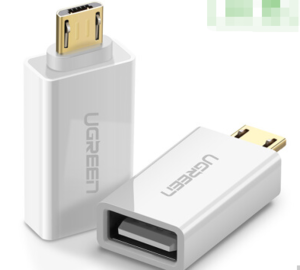How to Install Applications on POS Systems: Difference between revisions
| Line 13: | Line 13: | ||
Wizarview is a terminal management system of wizarPOS. If you want to use Wizarview to manage your terminal, such as installing or uninstalling an APK remotely on a terminal, please apply for the Wizarview account from wizarPOS. | Wizarview is a terminal management system of wizarPOS. If you want to use Wizarview to manage your terminal, such as installing or uninstalling an APK remotely on a terminal, please apply for the Wizarview account from wizarPOS. | ||
== Use TF card == | == Use TF-card == | ||
# In TF card, there are two ways to create the folder for apk installation: | # In TF-card, there are two ways to create the folder for apk installation: | ||
## Create the folder "\wizarpos\homesettings\homesettings_[customname]\apks". In this folder name, the '''[customname]''' is different for different customer. Please find this from the terminal settings, see the kernel version in Settings>About POS, if in the last line display “splash=wizarpos” , then the customname is wizarpos, so the folder is "\wizarpos\homesettings\homesettings_wizarpos\apks". | ## Create the folder "\wizarpos\homesettings\homesettings_[customname]\apks". In this folder name, the '''[customname]''' is different for different customer. Please find this from the terminal settings, see the kernel version in Settings>About POS, if in the last line display “splash=wizarpos” , then the customname is wizarpos, so the folder is "\wizarpos\homesettings\homesettings_wizarpos\apks". | ||
## Create the folder "\cloudpos\app". This folder only works of PosSysAssistant app version 2.11.8 or above. | ## Create the folder "\cloudpos\app". This folder only works of PosSysAssistant app version 2.11.8 or above. | ||
Revision as of 13:13, 17 March 2020
Use ADB commands
Note that you can use the ADB command only in the engineer mode terminal. Before using the ADB command, you must make sure that the USB driver is installed on the PC. The USB module is provided by Qualcomm, so you can download drivers from Qualcomm's official website or some free driver tools that support Qualcomm's USB drivers.
For Q1,please download the ADB driver from http://adbdriver.com/, the USB driver from ftp://sdkuser:wizsdkar@ftp.wizarpos.com/QUD.WIN.1.1Installer-10039.2.zip (for win7) or ftp://sdkuser:wizsdkar@ftp.wizarpos.com/usbdriver_xp.rar (for winXP). Please get Android SDK from Google and install it on your PC.
The steps of install APK is like follows:
- Connect the terminal to PC.
- Open the dos window.
- Input the adb install –r XXX.apk
Use WizarView
Wizarview is a terminal management system of wizarPOS. If you want to use Wizarview to manage your terminal, such as installing or uninstalling an APK remotely on a terminal, please apply for the Wizarview account from wizarPOS.
Use TF-card
- In TF-card, there are two ways to create the folder for apk installation:
- Create the folder "\wizarpos\homesettings\homesettings_[customname]\apks". In this folder name, the [customname] is different for different customer. Please find this from the terminal settings, see the kernel version in Settings>About POS, if in the last line display “splash=wizarpos” , then the customname is wizarpos, so the folder is "\wizarpos\homesettings\homesettings_wizarpos\apks".
- Create the folder "\cloudpos\app". This folder only works of PosSysAssistant app version 2.11.8 or above.
- Copy the apk files to the above folder.
- Install the TF card, start the terminal.
- After the terminal enter to system, will popup an install window, checked/unchecked the APK you want to install, then confirm. This step is only for 1.2, that is, the installed APK folder is \cloudpos\app\XXX.apk.
- After the terminal enter to system, will popup the installation wizard, then install the APK according to the wizard.
Use U-disk
Insert a converter as shown in the figure below into the micro USB interface of the terminal, and then insert the U-disk into the converter. The U-disk here is equivalent to the role of the TF card. For the next steps, refer to the TF card operation above.

